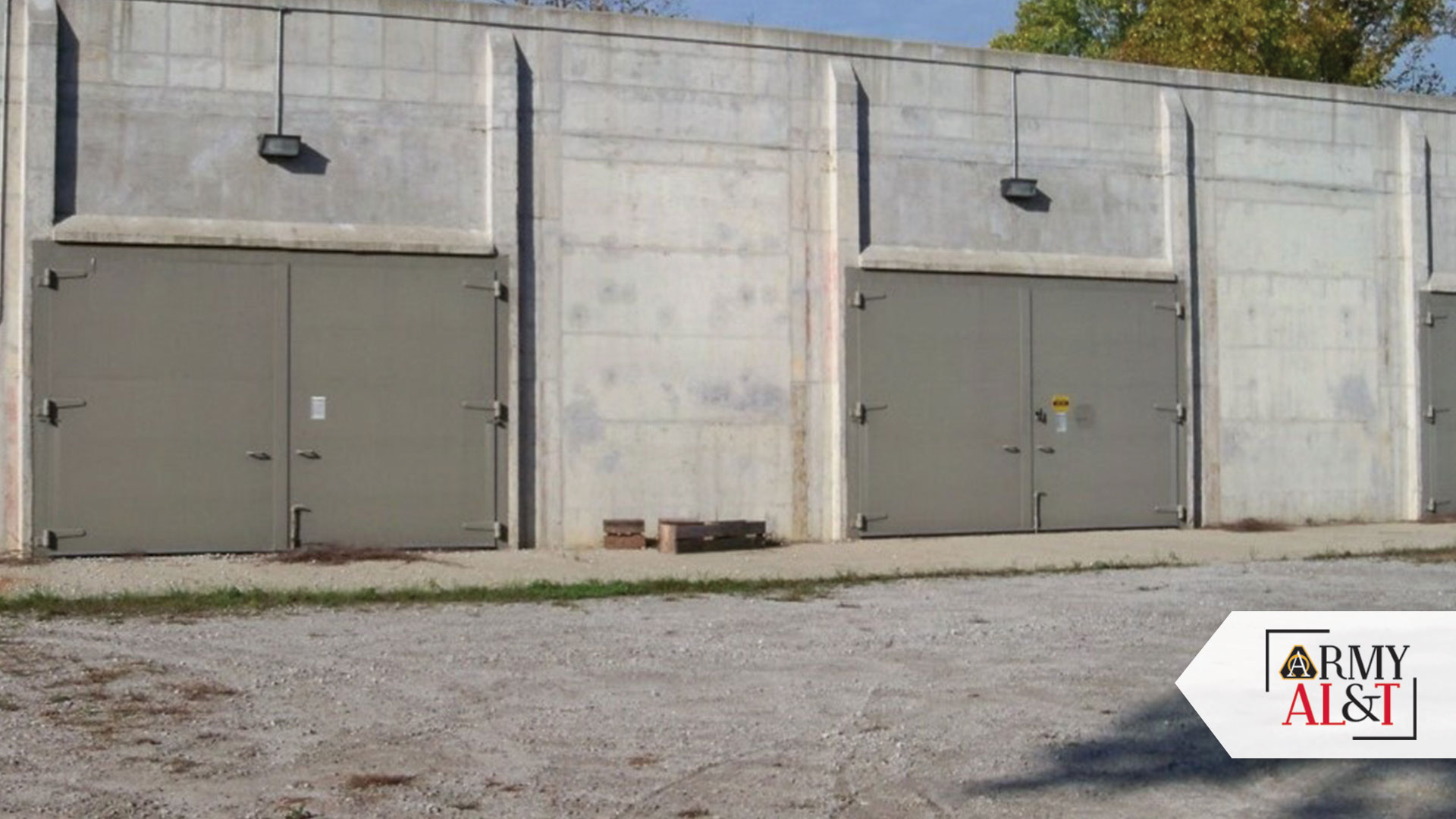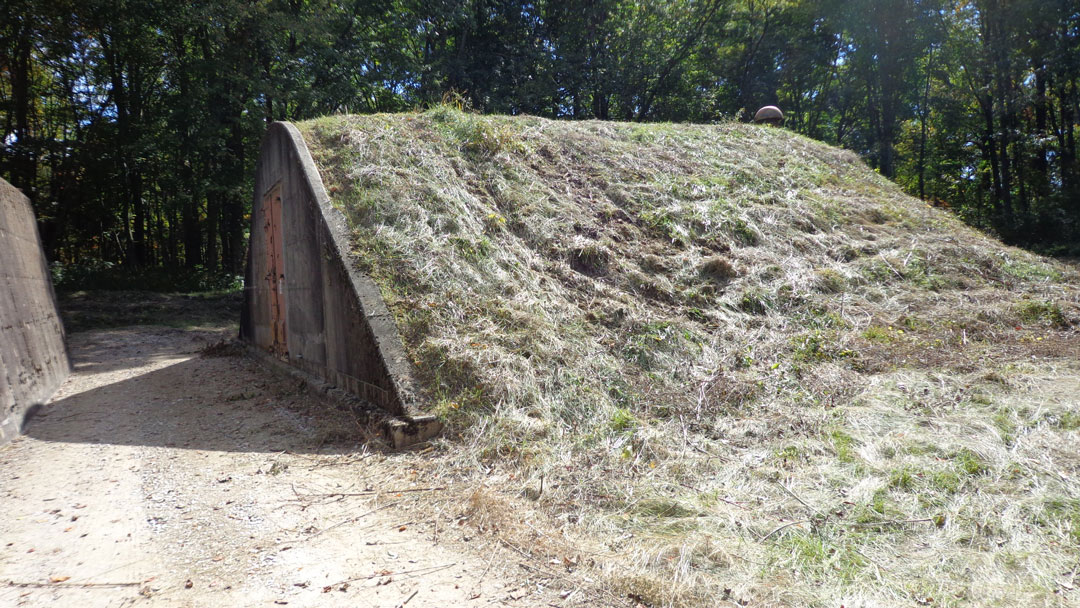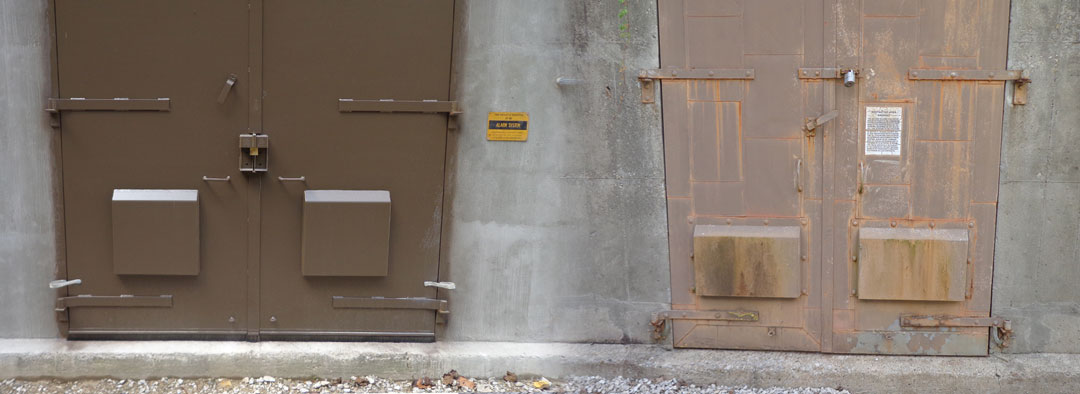
THE MODERN LOOK: Modern storage magazines, which are larger, drier and provide electrical service, would provide greater capability to properly store modern munitions.
The organic industrial base needs major upgrades if weapons facilities are to keep pace with modernization.
by Col. Stephen P. Dondero and Lt. Col. Dennis K. Williams II
In a recent meeting among numerous Army depot commanders, one asked the rhetorical question, “Would any of the services be comfortable storing a sensitive hypersonic missile system or any of its complex subcomponents in a wet cave?” The answer is obvious.
Weapons modernization is accelerating at a blistering—some might say hypersonic—pace to stay ahead of our potential adversaries. There is general agreement in defense circles that this drive is critical to success if our joint forces are to win in near-peer, large-scale combat operations.
Among these modernization advances are the hypersonic programs, directed energy weapons, long-range precision fires and upgrades to existing missile systems.
U.S. Army Futures Command has transformed the testing and acquisition process to field the next generation of weapons, but they are being developed faster than the sustainment planning for these systems. The Army must prepare the depots and arsenals within its organic industrial base to maintain, store and distribute these new and complex weapon systems in modernized facilities that are fit for the purpose. Though a great deal of effort has been made to maintain our strategic storage facilities over the decades, their average age is 70 years old. Many are more than 80 years old, having been designed and built in response to World War II. The need for major upgrades or even replacement is endemic.

WATER DAMAGE: Water intrusion in a high explosives earth covered magazine at Crane is one of the issues to be addressed with placing the next generation of munitions in older magazines.
We cannot modernize all of our facilities in five years—or even 20—because of numerous limiting factors such as funding, planning cycles, design timelines and competing defense priorities. We have to focus our efforts and start with what we call our strategic out-load locations, which are regional locations that can ship munitions globally at a moment’s notice.
We must also keep a close eye on the second priority, our storage facilities. It is impractical for warfighters to carry all the munitions that they need in a conflict. There are seven geographic combatant commands across the globe, each with munitions requirements that Joint Munitions Command must meet. Both out-load and storage are key to maintaining munitions readiness. As Col. Gavin J. Gardner, commander of Joint Munitions Command, said in July, “We need modernized facilities and equipment to properly handle, store and distribute [munitions] at the speed of war.”

WASH OUT: A washed-out road at Crane Army Ammunition Activity limits magazine access by road crews. (Photos by Thomas W. Peske, Crane Army Ammunition Activity)
READINESS IS KEY
Readiness is among the top priorities across the services. The role of the organic industrial base is to support that priority. Readiness in the base can be measured by how quickly we can get to the munitions, how fast they can be shipped, and whether we can deliver serviceable munitions at the point of need without additional preparation. It is important to think about it in these terms, because some of our installations and activities have thousands of storage magazines—munitions storage facilities—of various types and numerous out-load platforms totaling over 20,000 acres.
For context, across the Joint Munitions Command—whose responsibility it is to execute the production, maintenance, storage, distribution and demilitarization (rendering inert) of America’s munitions—there are thousands of potentially explosive sites where these activities take place. Rail or road access to those sites can degrade over time, and some magazines’ doors and loading docks are aging. Some shipping facilities need upgrades to handle the net explosive weight (NEW) of surge shipments because the facilities were designed, approved and built to handle lower-NEW shipments in an era with older equipment.
For those unfamiliar with the concept, net explosive weight is not the actual weight of the munition, but rather the total mass of the contained explosive substances minus all the packaging, casings, etc. If munitions are stored in magazines affected by water intrusion or pests, such as mice or bats, then quality suffers. Bat droppings corrode electronics, likely rendering the munitions unusable. Those items damaged by water or pests may not be suitable for immediate use by the warfighter, requiring costly and time-consuming refurbishment, repair or destruction of severely degraded munitions deemed beyond economic repair.
If a production facility is not approved for the net explosive weight it is needed to produce, yet another limiting factor is introduced to the equation.
The infrastructure that supports our munitions enterprise is equally as important to our military’s readiness as the munitions themselves. Without serviceable ammunition at the point of need, our combat aircraft, main battle tanks and artillery systems are merely giant paperweights.

OLD SCHOOL: A black powder magazine, constructed 1943, is limited is size, explosive storage capabilities, electrical services and environment controls.
CLIMATE CONTROL NEEDED
Some of our emerging weapon systems are much larger and more sensitive than a basic 2,000-pound bomb. Therefore, the physical size and internal climate of our storage facilities are important concerns to address. A touch of rust on a “dumb” munition may have little to no effect on its functionality, but it is unlikely to instill confidence in the airman or sailor loading it onto an aircraft’s bomb rack. More importantly, a high-humidity environment may severely damage the sensitive electronics designed into many modern smart munitions, costing time, money and overall readiness.
What if magazines are too small, or cannot be accessed by special handling equipment, such as modern forklifts? We may find ourselves in possession of expensive weapon systems without a suitable home. Imagine trying to move a 32-foot container full of sensitive electronics into a concrete, cavelike storage room with a concrete berm 10 feet in front of it. It would be physically impossible to maneuver the container through the door. And water intrusion—leaks or flooding—and bat droppings would seriously corrode the electronics, rendering them useless.
LEADING THE WAY
All of these factors and more must be taken into consideration in our modernization planning, prioritization and execution, preferably during development. Retrofitting existing facilities with temperature and humidity controls—either active, or more effective passive controls—will be critical to munitions readiness in most environments. Also key to modernization success, near and long term, will be demolishing old smaller magazines such as those for black powder, fuses and detonators, to free up real estate for modern storage and shipping complexes. Acknowledging that money will continue to be limited for the foreseeable future, we must develop a phased approach to modernize the munitions infrastructure across the depots and arsenals so that we maximize buying power.

OUT WITH THE OLD, IN WITH THE NEW: A new, all-steel magazine door (left). Proper storage is one of the keys to maintaining munitions readiness. And an old, wood-core magazine door (right). Most munitions magazines were designed and built during World War II.
KEEPING AN EYE ON ASSETS
With our aging infrastructure comes outdated storage, inventory and security protocols and procedures. We can improve markedly on those as follows:
• To maximize available storage, we should switch from outdated two-dimensional square footage to three-dimensional, cubic-foot space management.
• Currently, we are conducting costly and time-consuming in-person inventories. This certainly has a place in the modern world as a means to audit the accuracy of electronic systems, but it should not be the primary method in 2020. A more effective way to inventory and manage a large footprint containing tens of thousands of different items would be to use modern techniques such as artificial intelligence (AI) and machine learning. We also could employ other commercial off-the-shelf solutions such as the latest radio frequency identification and smart tag technology, with automated sampling conducted by a small fleet or swarm of reader-equipped, autonomous or semiautonomous unmanned aerial vehicles (UAVs).
• UAVs also could be an effective way to save time and money by reducing the number of security personnel needed to check every facility within a 24-hour period. Using AI and change detection technology—which detects changes in what should be there, versus what is, or isn’t, there—a fleet of UAVs with preprogrammed routes could perform required security checks while being monitored remotely by a smaller security workforce, and cover more ground in less time.
CONCLUSION
The first challenge facing our strategic munitions storage installations and facilities is ensuring that we have the ability to surge quickly, safely and effectively in order to out-load the munitions our joint forces need to fight and win.
Second, we must focus on our storage facilities and whether they can support larger, more complex munitions designed for the modern fight. Without serviceable munitions now, the speed of out-load is irrelevant.
Lastly, a modern approach to the space management, inventory and security of our munitions is necessary for the most effective overall management of our assets.
Working with the defense industrial base during development of the next generation of munitions will ensure that the organic industrial base understands future requirements. This approach allows the Army to make decisions early on where to invest in modernizing the base, rather than reacting to “what’s next.” In the process, we should look at commercial off-the-shelf solutions that optimize how we see space in 3D instead of 2D, improve accountability and ensure security.
We will have to invest wisely as we prepare to synchronize, prioritize and execute our modernization plans for the fiscal year 2023-2027 program objective memorandum and beyond. We must focus on those facilities where we store and distribute one of the most critical assets needed to deter and defeat our adversaries in the 21st century. Ready and reliable munitions equal readiness, lethality and victory in the physical battle domains. They also ensure that our most precious asset, our people, can accomplish their mission and come home.
COL. STEPHEN P. DONDERO is the commander of Crane Army Ammunition Activity, Indiana. He is a career logistician with 25 years’ experience supporting American and Allied forces from the tactical to the strategic level. He has led Soldiers and civilians at the platoon, company, battalion and, currently, brigade levels; Crane is one of the organic industrial base’s largest munitions depots, with three subordinate depots. He holds a Master of Science Administration with a concentration in leadership from Central Michigan University, an M.A. in defense and strategic studies from the Naval War College, and a B.A. in political science from Loyola University Maryland.
LT. COL. DENNIS K. WILLIAMS II is the commander of Letterkenny Munitions Center, Pennsylvania, one of four strategic out-load sites among the organic industrial base’s munitions depots. He is a career logistician with 28 years of experience supporting American and Allied forces from the tactical to the operational level. He has led Soldiers and civilians at the platoon and company levels and is currently serving at the battalion level as the commander of Letterkenny. He holds a Master of Management from the University of Phoenix, a B.S. in history from the University of Maryland, and a Demonstrated Master Logistician certificate from SOLE, the International Society of Logistics.
Read the full article in the Fall 2020 issue of Army AL&T magazine.
Subscribe to Army AL&T News – the premier online news source for the Army Acquisition Workforce. ![]() Subscribe
Subscribe







